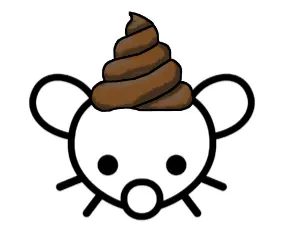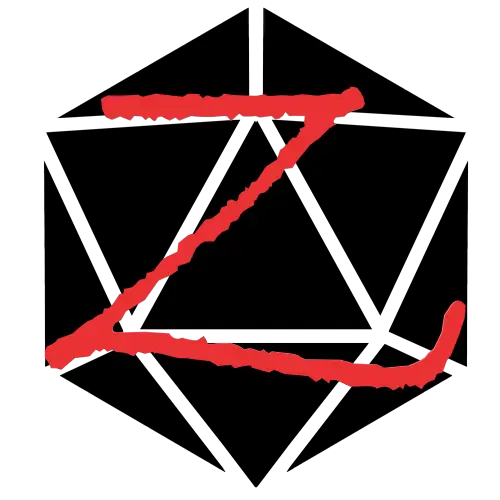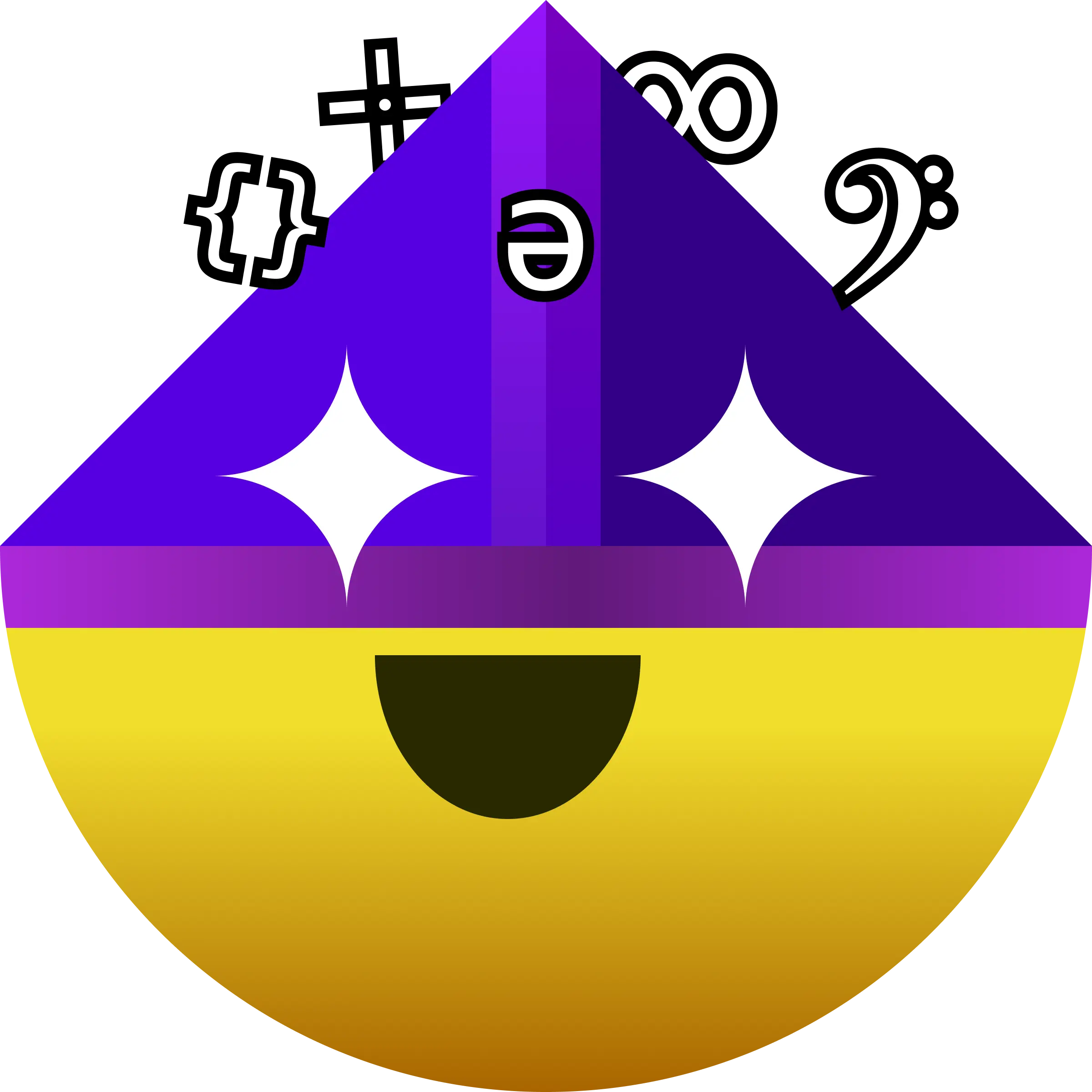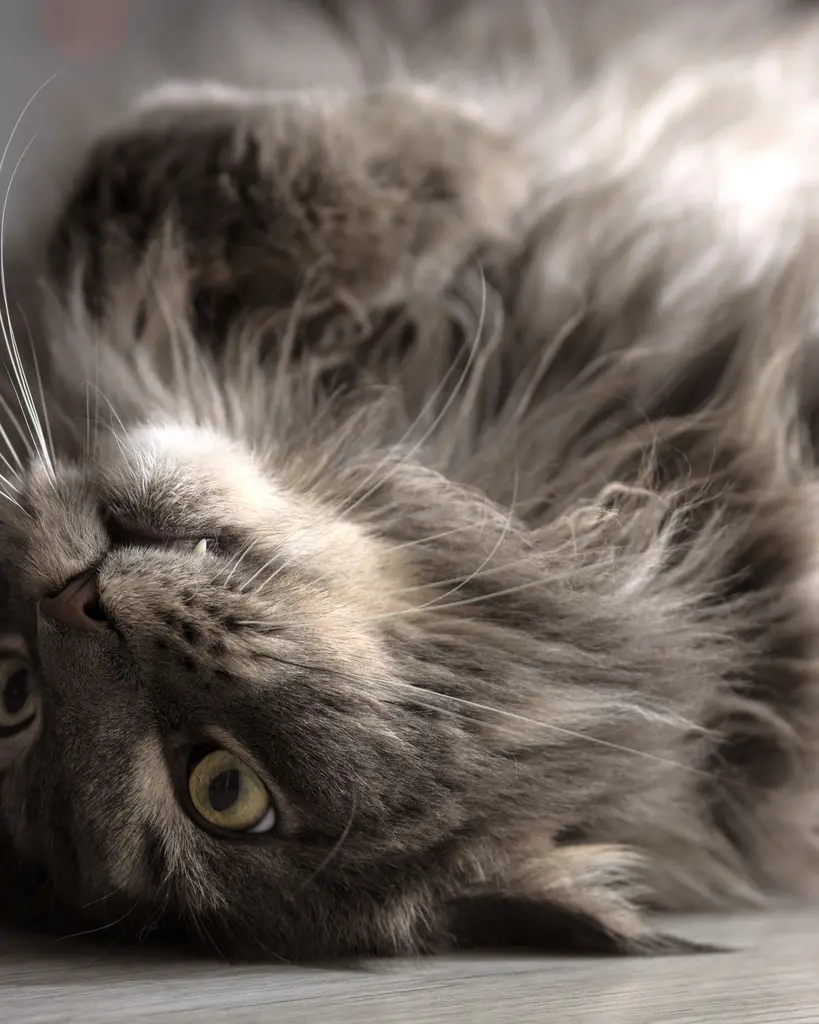This reminds me of a guy in several of the Japanese classes I took in college. He kept trying to convince the professor that he should be exempt from taking exams because he was president of the anime club and was already basically fluent because he watches so much anime. Everyone including the professor thought he was joking at first lol
The dude could barely make it through one sentence when we would have to read in class
I would get it the other way around, skipping to the test and not taking classes
I loved the Japanese classes I took, but the classroom portions were very low key, and if someone was struggling the professors would basically hold their hand through it. The exams on the other hand were brutal lol
That’s what I did. Except it was physics, not Japanese.
“Ok, here’s the test, if you score 90%, you pass, otherwise shut up”.
Here is an alternative Piped link(s):
https://www.piped.video/watch?v=5k_LDXa3lPk
Piped is a privacy-respecting open-source alternative frontend to YouTube.
I’m open-source; check me out at GitHub.
Oh boy, it’s gonna be rough when he learns that you need another ~2.000 kanji to be fluent. Although only ~100 for JLPT 5.
For context, there are only 46 hiragana and 46 katakana.
Japanese is whacky… Like why not just pick one alphabet instead of using 3 different ones? Are they stupid?
I had to はし (hashi) over the はし because I forgot my はし at home.
Same word phonetically, three meanings. With Kanji it’s easy.
I never understand this example. Other languages have words with the same pronounciation and nobody has a problem with it.
In many other languages homophones are often spelled differently. Hiragana and katakana phonetic alphabets so homophones all have the same spelling.
German “umfahren” has entered the chat. Just with different stress it can either mean drive around someone/something or drive someone/something over.
They also denote etymology differently. I learned (3 years of high school japanese, got to like a 1st graders level if that but i did learn a lot) that hiragana is used for words that were originally Japanese, while katakana is used for words adopted from other languages. That’s why you see English translated into katakana, not hiragana. Iirc, kanji might’ve also come before wither hiragana or katakana, and unlike Chinese there is a way to understand kanji based off of its original components (there’s a name for them I can’t remember)
It makes more sense when you can read Japanese. It is far easier to read Japanese with their multiple writing systems mixed together than to read it all in just hiragana (their native phonetic writing system). Also much faster.
Specifically in the case of Japanese language, the current orthography highly depends on the use of kanji to remove ambiguities from a purely phonetic notation in either kana system.
As a side note, Korean language also used to be written with hanja (Chinese characters) mixed in with hangul (native phonetic alphabet). The shift from mixed hangul-hanja notation to pure hangul was gradual and the major contribution that made it possible was the modernized orthography rules that allows visual differentiation of homophones when written down while adding some complexity. It’s not perfect, but it works.
So, while many argue that kanji is essential to Japanese or hanja needs to be reintroduced in Korean for examples cited, I think the definitive reason is that the japanese speakers themselves doesn’t feel the overwhelming need to switch right now. If they chose to introduce a purely kana orthography and had enough funding and political will, that’s how they will roll.
As a side note, Korean language also used to be written with hanja (Chinese characters) mixed in with hangul (native phonetic alphabet). The shift from mixed hangul-hanja notation to pure hangul was gradual
Oh good, someone already pointed this out!
I lived in Korea in the mid-aughts, and at that time hanja were pretty obviously on their last breath. The old man who ran the convenience store across from the school showed us how he was studying hanja, and in Korean class I learnt the hanja for Busan, the city I lived in. But that was it. I almost never saw anything about hanja otherwise, other than on old monuments and such. Hangul was pretty close to 100%.
hey just wanted to ask: what’s up with the circle-bits in korean characters? they’re really unique, I just have no idea what they indicate (if anything) and always wondered…
The circles? You mean
ㅇ? It’s a component (consonant ieung) letter and indicates either:- no sound before syllable’s vowel: 나
[]- 아[] - final sound
[ŋ]at the end of a character block, placed at bottom: 앙[]
yeah, thanks! TIL.
- no sound before syllable’s vowel: 나
After that, 紙に神の髪を描く (Kami ni kami no kami o kaku)
I wish Japanese had 1.5–2x the number of sounds it has presently… Without Kanji it’s unreadable, but since the advent of English gairaigo, it’s rapidly becoming a weird weird English language anyway…
Vid related: https://youtu.be/pW4AiEqKGto
Here is an alternative Piped link(s):
https://piped.video/pW4AiEqKGto
Piped is a privacy-respecting open-source alternative frontend to YouTube.
I’m open-source; check me out at GitHub.
So what? English has eye, I and aye. Same pronunciation, different writing. You don’t need three writing systems for that.
The Japanese alphabets are phonetic so all homophones have the same spelling. In your example all the words are spelled differently.
Fair enough.
Because there are a lot of words that sound nearly identical, way more than in English. For speech you have pitch accent, but you can’t achieve that with writing. I’m not saying it’s a good system, but at least it makes a bit of sense. But it is pretty stupid to have 2 literally identical alphabets which just look different
Considering conlangs exist where they show pitch by having a diacritic above/below the syllable, it is pretty possible. Just not likely to achieve wide spread adoption in an established language
You don’t need conlangs for that. Vietnamese does it. It’s another language that originally used Chinese writing system and then its own derivative thereof before the Romanisation came in that ks to Portuguese missionaries and then French colonialists starting in the 16th century.
Edit: although you could almost argue that romanised Vietnamese writing almost is a conlang, or at least a con-writing system, given how it was imposed on the language from the outside for the convenience of outsiders, and it has to really stretch to accommodate the Vietnamese language’s natural features.
Katakana (one of the two phonetic alphabets) is for foreign words and it’s not exactly the same - Katakana has more variations to represent different sounds basically unused in actual Japanese-origin words. For example there’s the ヴ character pronounced like “vu” but no such sound is used in Japanese words. It gives an immediate visual indicator that the word is taken from another language so it’s not like they made it just because.
We also use two different alphabets. Lower case and upper case. Upper case is basically Latin script optimised for stone carving, lower case was developed for ink writing (I think in the Carolingian era). Now we use both at the same time without batting an eye.
Add cursive in the mix and we also have 78 letters instead of 26.
Ha, never thought of it like that. Although everyday Japanese also uses the alphabet occasionally, so you kind of have 4 alphabets to learn? 5 if you count Arabic numbers?
Nah, it makes sense. You can write everything with just hiragana if you want to, in theory.
Katakana denote words from different languages, which I found really helpful when learning the language. It’s probably easier for fluent people too. There are a lot of these words.
Kanji are a lot more compact and make text a lot more readable. Japanese does not use any whitespaces so it can be tricky to separate words when using only hiragana. Instead you mostly have some kanji separated by hiragana. Some Kanji only denote a single hiragana, but usually they represent a group of them therefore saving on space too. Like other languages they have words with multiple meanings, but they have different kanji, further improving readability.
Take this with a small grain of salt, I’m by no means fluent myself, but I’ve been learning for quite some time.
Like other languages they have words with multiple meanings, but they have different kanji, further improving readability.
To elaborate, words that have the same katakana, might have different kanji. Like how, in English, dough can rise, and a balloon can rise.
In English, you have to gather the correct meaning from context, in Japanese, there is a “preferred” alternative where these two words aren’t the same. Buuuuut, if you don’t happen to know the exact kanji word for dough-rising, you can still just use the katakana.
I think I get what you’re saying, but was really confused because those two uses of rise are the same word and same definition applied to different contexts.
I think the concepts you’re looking to describe are homonyms, homophones, and homographs.
Well no, for example, kanji has two different for climb (up a ladder) and climb/ascend (into the air), which have the same katakana.
That happens quite a lot for words which have similar, but subtly distinct, meanings.
As a Japanese learner, katakana is a godsend. It’s like reading a scientific paper in English and having all the Latin in italics, as an indicator that “don’t worry this is a foreign word, you’re not an idiot for not recognizing it.” Especially because most katakana words are derived from English (or words you’d recognize as an English speaker) so it’s just a matter of saying it over and over until the pieces click into place. Example: オーストラリア = Oosutoraria = Oh-s-t-rah-ree-uh = Australia.
Also outside of picture books for young children, Japanese doesn’t use spaces and has way fewer sounds than most languages which results in a LOT of homonyms and similar words that all blends together (see other comment YouTube link). So having three writing systems in one really helps convey meaning and makes reading much faster.
Amazing if your fluent in English, but lord have mercy if your main language is anything else!
I leaned Japanese in a mixed-nationality school where I was one of the only English-native students. I did not envy their struggles with katakana, as I’m sure the Chinese-native students did not envy my struggles with kanji! (Meanwhile everyone else just struggled lol.)
I thought that would be the case for me too, but man I just hate katakana. I find it so difficult to read compared to hiragana, even after 1.5 year of daily learning
Don’t get me wrong, I still struggle with reading it quickly and fluently compared to hiragana (although that’s often because the words are clunky af loanwords), but I’d still much rather it exist than not. かれはぼうなすをもらったらおうすとらりあに行くつもり is a bugger to read without katakana.
Fair enough I suppose, and yes those words definitely are pretty clunky usually. But I wonder if it wouldn’t be easier if they would integrated spaces?
Why doesn’t English fix its spelling?"
Unique English word misspellings are like our kanji.
Because this is what Japanese would look like of they didn’t use kanji.
I get that this is funny, but all I can see is a reduction in the number of lines. That sounds like a win to me.
But yes, there are some sentences in English that look really stupid when you write them out too. Buffalo buffalo buffalo buffalo buffalo buffalo buffalo buffalo buffalo buffalo.
To be fair we have two alphabets upper case and lower case. The hiragana and katakana are basically the same. One to one equivalency between them. The kanji does add a lot of complexity.
Modern Japanese is a chimera of native words, Chinese, Pali, and various European languages. Kanji are used to write the Chinese loanwords, hiregana for the indigenous stuff, and katakana and Romaji for the European loanwords (sort of). You could write everything in hiregana, or even in katakana or Romaji with some effort, but doing it this way is easier.
Modern Japanese is a chimera
Most languages are, it’s just that Europe had the benefit of latin being really dominant. We’re super lucky here we just latinized all the Greek and Hebrew, instead of writing them in their own alphabet.
No it adds variety to the look of writing, each character is a syllable not a single sound (mostly) so they use fewer characters for per syllable, having two syllabary systems means that there’s more visual distinctness per word. I’m not a Japanese speaker so don’t take my word for it, but no they’re very much not stupid it’s a clever system and one that’s related to the history and culture of Japan.
I know it’s a rhetorical question, but It’s a result of the popularization of ideograms during the spread of writing technology in their region, as opposed to the representation of concepts through only patterns of a small set of character seen in Europe which later spread to the far west. They’re far from the only culture to make the choice.
I’m just going to pretend I know what all of this means and move on.
Basically asking if they are learning English and is great at the first half of the alphabet, do they really need to learn the second half?
And then there’s Kanji, which is the arguably more important and the most difficult thing in Japanese, which isn’t even mentioned in the post (you starting to learn that in more advanced class, which I doubt they even reached it yet)
Might wanna mention that the character set is a bit larger with Japanese. I don’t know how much larger, but Chinese boasts something like 2000+ characters.
This isn’t the best way to describe it. The following is an oversimplification.
Hiragana is a set of 46 characters, each representing either a vowel or a consonant-vowel combo. These characters are used to spell all native Japanese words. (There’s a lot more than just this, but this is the most basic information.)
Katakana is a set of 46 characters, each representing either a vowel or consonant-vowel combo. These characters are used to spell foreign words (as best as possible.) Here’s a Wikipedia article on English loanwords in Japanese.
These two writing systems are called, together, kana.
Then there’s kanji, which are the symbols that mean an individual word or concept, and which are characters that were from China. 日 means “day” or “sun” and is pretty popular among beginners. (Or at least it’s in all the beginner books.)
Combined, kana and kanji are the writing system.
The person asking if they need to know katakana is actually asking a normal question for foreigners. They just need to be reminded that in Japanese they can’t expect the romanization of foreign words, because katakana is for people who speak Japanese to read foreign words. They don’t all learn the English alphabet to read foreign loanwords!
I might know what Coca-Cola is, but unless I can read コカコーラ and understand that means koka-kola, I’m not going to know if it’s being sold on a menu.
ETA; All words can be written in kana. Kanji isn’t mandatory for written communication it’s just that if you want to be proficient in the written language, you are required to know a certain number of kanji. I’d argue you need katakana more than kanji.
Well, I have heard that The Japanese intentionally made their language difficult for foreigners to learn. I would say they accomplished their task.
Dude wtf you’re all over this site, are you John Lemmy or something?
Anyways, Japanese uses different writing systems – the first two that people usually learn (Kana) are basically just symbols for syllables (also called “mora”), Hiragana and Katakana. They use a different set of “letters” which represent the same sounds (you’ll find a “ka”, “m/n”, “fu”, “o”, etc. in both, but they look different). There’s also Kanji, which is an umbrella term for the various usages of characters which were adapted from Chinese, this includes Kana but generally people don’t mean to include Kana when they say “Kanji”. One Kanji can have MANY meanings and pronunciations, due to many multiple ways in which the character was adapted from Chinese, so the writing is extremely contextual. You can generally “spell out” a Kanji with Hiragana or Katakana, often times this is used when learning new Kanji or to disambiguate meaning. It’s also one of the ways you use to type Japanese on a device/keyboard (the characters can be converted to a Kanji using software where you can pick based on a list of most common Kanji which are pronounced the way you typed).
Since Japanese doesn’t use spaces or dots or anything usually, you’ll often see all three mixed together in order to separate different words, although in modern times Katakana has especially been used for borrowings from foreign languages.
There’s also Rōmaji, which is a term for the various romanization/latinization systems for Japanese. This one is also commonly used to type Japanese text.
The JLPT is the Japanese Language Proficiency Test, you take it to get a certificate stating your Japanese language abilities and the results are ranked from N5 being the lowest (correlates to ~A1-A2 CEFR, slightly more than beginner knowledge) to N1 being the highest (~B2-C2 CEFR, high level of abilities in the language)
The “alphabet” is generally the easiest part of learning a language, and an obviously important part, so the person being unwilling to put the time into it means he probably isn’t serious enough about learning the language to actually follow it through.
Apologies if my explanation is off, I don’t speak Japanese.
In order to pass my english exam, should I learn uppercase? Or just lowercase is OK?
Also, wtf is a looped cursive?
To be fair I’m a native English speaker and I can barely decipher most people’s cursive
It’s all about the pen for me. Standard ball point? Well all that’s coming out is chicken scratch. A proper fountain pen? Somehow I produce the script from The US Constitution. Totally legible. Damn near beautiful.
When I started learning Japanese our teachers gave us the kana on two sheets of paper and said “you’ll learn these by Monday”. I had never seen Japanese before and it was quite a challenge, but do-able. I still know them decades later, even though I never was fluent and haven’t practiced since uni.
Haha I was studying katakana on the flight over. Katakana is typically used for English words, so you can understand a lot of text with only knowledge of a basic alphabet and not knowing any actual Japanese.
Coca-Cola was the first katakana I learned.
コカコーラ for the uninitiated. (Ko ka ko (dash means elongated vowel here) la.)
That’s awesome! I saw it printed on a t-shirt soon after arriving in Japan, and a few days later recognized it on a cafe menu and ordered it for the kids.
So, it’s among the first things I learned too.
バカ
I mean, reading just three lines of anything in Japanese would give you the answer to this.
The answer is no, unless you strictly limit yourself to manga title pages.
Do keep in mind that some widely accepted words that were imported from foreign languages would remain in Katakana, even if it’s been there for centuries.
One example would be “ramen”.
and some native japanese words get katakana-ised too!
e.g. バカ, most animal names, etc.











